
Publisher:
Bonnie King
CONTACT:
Newsroom@Salem-news.com
Advertising:
Adsales@Salem-news.com

~Truth~
~Justice~
~Peace~
TJP
May-12-2010 00:11

 TweetFollow @OregonNews
TweetFollow @OregonNews
Barbie's Bad Break-up: The Fight for Mexico's Heartland
Salem-News.com Special ReportViolence threatens more than just Mexico's north.
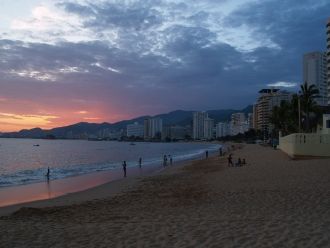 Photos courtesy: caleyelguero.files.wordpress.com, pocruises.com, ccidd.org and latina.com. |
(LAS CRUCES, N.M.) - From the bustling, smoggy innards of Mexico City, the cities of Cuernavaca, Morelos, and Acapulco, Guerrero, long loomed as tranquil getaways for the harried residents of the Mexican capital. For the rich, weekend homes and estates in and around Cuernavaca and on the beaches of Acapulco stood as status symbols of class privilege, economic might and political power.

For the middle classes, a weekend jaunt to an Acapulco hotel or an appearance at the hip, outdoor bars in downtown Cuernavaca delivered relief to a hectic weekday schedule. And even for the poor, a low-budget splash with a cracked tin of tuna on the sands of the Bay of Santa Lucia represented a ritual escape from reality.
Nowadays, though, the mythic nirvana of the resort destinations just south of Mexico City is becoming part of a fabled past. In recent months, episodes of murder, decapitation and chaos blamed on organized crime have shaken Cuernavaca and Acapulco.
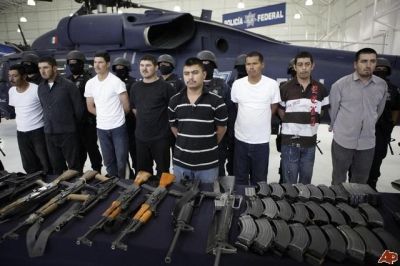 Alleged members of the Beltran Leyva drug cartel are presented by |
Efren Leyva, president of the Guerrero state branch of the Institutional Revolutionary Party (PRI), called the violence in his home turf ground nearly “uncontrollable.” As in Chihuahua and Tamaulipas to the north, the killing spree in Guerrero coincides with an election campaign.
Since the beginning of the year, several prominent politicians associated with the PRI, PRD and PT parties have been murdered in Guerrero.
The break-up of the Beltran-Leyva drug cartel, also known as “The Enterprise,” into two warring factions is to blame for much of the violence. Since last year, authorities have attributed more than 300 killings to the conflict, with at least 57 of them occurring in Cuernavaca alone. On one especially violent weekend last March, more than 30 bodies were tossed around Acapulco as the Pacific resort geared up for the springtime holiday season. As in Ciudad Juarez and other northern hot spots, many if not most of the war’s victims have been very young.
Policemen and other officials have made the list of the victims, including Acapulco city water department official Alejandro Lopez, a half-brother of former Mayor Alberto Lopez Rosas of the center-left PRD party.
The father of the two men, Alfredo “El Rey Lopitos,” Lopez Cisneros, was a legendary land squatter organizer and political leader gunned down back in 1967.
Barbie and Hector Call it Quits
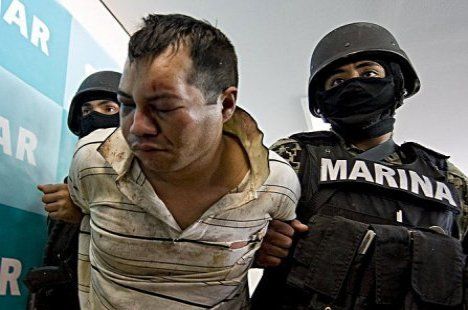 Members of the Mexican Navy escort an alleged member of the Beltran Leyva's drug |
Rising tensions inside the Beltran-Leyva organization exploded after kingpin Arturo Beltran Leyva was slain by Mexican marines in a Cuernavaca shootout last December 16th.
Known as “El Barbas” and “El Jefe de los Jefes,” or “Boss of Bosses,” Beltran’s violent death in a high-rise luxury apartment complex located in the center of the Morelos state capital symbolized how drug lords had climbed the social ladder to live alongside - if not replace - the old, well-heeled bourgeoisie that long claimed the “City of Eternal Spring” as its garden of diamonds and delight.
The capo’s death set the stage for a bloody power struggle between his brother Hector Beltran Leyva and the Texas-born Edgar Valdez Villareal, a blue-eyed blonde widely known as “La Barbie.”
Considered a veteran of the narco war that rocked Nuevo Laredo, Tamaulipas, between 2003 and 2007, Valdez reportedly had been the chief of Arturo Beltran’s private army of gunmen known as “Los Pelones,” or the “Baldies.”
Facing indictments on this side of the border, the US Department of State is offering two million dollars for information leading to the apprehension of a US citizen who somehow emerged as a key player in Mexico’s narco wars.
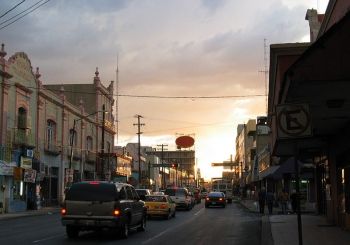 Ciudad, Juarez Mexico |
Backing Hector Beltran in the current struggle is Sergio Villareal, or “El Grande.” Beltran and Villareal are identified with the Southern Pacific Cartel (CPS), while Barbie may have aligned himself again with an old and powerful ally: Joaquin “El Chapo” Guzman.
As if the struggle within the old Enterprise wasn’t enough to rattle the nerves, other groups including Los Zetas and Michoacan’s La Familia, each backing different sides in the conflict between the two old Beltran-Leyva factions, have also staked out claims in the geographic areas under dispute.
Like the bloodbath in Ciudad Juarez, the war between Barbie and Hector was practically announced. Only days after Arturo Beltran’s death, Mexican Federal Attorney General Arturo Chavez Chavez told the press a violent power struggle for control of the syndicate could “not be ruled out.”
In addition to smuggling corridors to Mexico City and beyond, a lucrative retail trade in illegal drugs in Cuernavaca and Acapulco is at the center of this war. In both cities, hundreds of “tienditas,” or illegal drug outlets, service a robust economy.
Tidied up with a legal cover, spin-off businesses and political and public security institutions subordinated to the underground economy and subterranean state factor into the spoils.
A War for Hearts, Minds and Heads
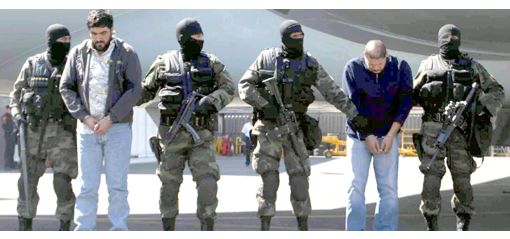 Edgar Valdez Villarreal, a.k.a La Barbie is the American believed to head the Sinaloa Cartel |
A public relations battle has been a noteworthy feature of the war for the Guerrero and Morelos “plazas.” Regularly, both sides drape narco-banners in public spaces to convey their messages. Typically, the CPS’ messages deride a “traitorous” Barbie as an alleged homosexual who cavorts with kidnappers and other low-lifes. Addressed to the “citizens of Morelos,” a recent message summed up the group’s posture: “The Southern Pacific Cartel is an organization dedicated solely to the trafficking of drugs. We would never harm Morelos’ families. The ‘Chief’ has given clear orders to eliminate the members that work for Edgar Valdez Villareal (la Barbie) who betrayed us and molested the public, and we have orders to kill, chop up and decapitate one-by-one all who have connections to him……"
The CPS’ attacks on Valdez for his alleged links to kidnappers builds on the campaign of the late Arturo Beltran to “cleanse” his area of influence of kidnappers, auto thieves and other petty criminals who were complicating the drug business.
Possibly with the collusion of local, state and federal authorities, the fallen capo’s hit men spent much of last year littering Morelos and Guerrero with bodies of victims bearing warnings against “lawbreakers” and social degenerates.
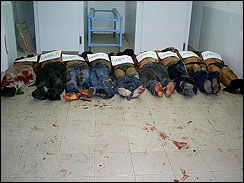 Terrible scene: Guerrero. CBS News photo |
Dramatically, the slaughter showed how normal state functions like arresting and trying accused criminals had essentially ceased to function and, in a twisted way, been outsourced to a private business.
On the other hand, messages attributed to Barbie taunt the CPS for consisting of greedy has-beens and killers of innocent people. In a recent statement, the author(s) accused the CPS of burning the homes and businesses of innocents in Cuernavaca. Presumed CPS messages denigrate La Barbie’s men for being “homosexuals,” while messages linked to Barbie refer to the CPS as “mayates,” a derogatory term for people of African descent.
In the Guerrero state capital of Chilpancingo, eight dismembered bodies were recently stuffed into plastic bags and dumped in the parking lot of state police headquarters. Presumably left by the CPS, a note accused Guerrero State Ministerial Police Director Valentin Diaz and two other officials of being traitors.
A military veteran, Diaz was appointed head of the Guerrero State Ministerial Police last year. Previously, he was in charge of a division of the Ciudad Juarez municipal police at a time when supervision of the local cops was turned over to professional soldiers.
Deadly Cross-Fire
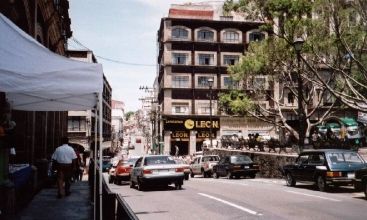 Typical street scene in Cuernavaca. Photo: ccidd.org |
In the dispute between Barbie and Hector, bullets often fly in very public spots. Posting on La Jornada’s website, a writer identified as “Ana” scribbled a postcard memory of an incident in downtown Cuernavaca only a half-block from the historic plaza: “I was drinking in a café with two friends when the shootout beganm, and the soldiers told us to get inside the building. We managed to see how they killed a presumed narco. Terrible things. I won’t go back there.”
This month, an eight-year-old child was killed when a truck he was riding in was shot up at an Acapulco gas station in broad daylight.
In mid-April, as the tourist season was winding down, a three-way shootout broke out on Acapulco’s main tourist drag. Occurring in the middle of the afternoon, cross-fire claimed the lives of the wife of Acapulco hotelier Antelmo Miranda, Laura Delgado Turillos, and two children, 12-year-old Carlos Miranda and 9-year-old Monserrat Miranda.
The clash occurred out very close to the US Consulate and on an especially busy section of the Costera dotted with restaurants, retail shops and hotels, including the Playa Suites - long favored by drug and booze-loving US springbreakers - one of whom nearly burned down a tower of the resort complex two years ago. A guest of Playa Suites, German Lopez, was in his room when shots rang out outside. The experience made Lopez question if he and his wife “were in a war zone and not on vacation.”
Almost immediately as the Acapulco gun battle began, Mexican Tourism Secretary Gloria Guevara declared that fears of violence in the old playground of Tarzan, John Wayne and Bill and Hillary Clinton were a matter of “perception.”
The local populace, however, knows and acts differently. Three weeks after the Costera shoot-out, a back-firing car nearly caused a stampede in the popular Gran Plaza shopping center just down the street from where the earlier blood-letting happened.
Where is the Government?
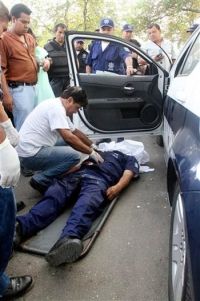 Officer down in Acapulco, Mexico |
Unrestrained violence in Cuernavaca and Acapulco unleashed a new wave of criticism directed at both local and federal authorities. Columnist Javier Sicilia questioned why authorities did not publicly respond to a widely circulated e-mail in Cuernavaca that warned residents to stay out of night spots and remain at home while the authors went about the job of “cleaning” the city of rivals. According to Sicilia, the e-mail accomplished its goal. By the evening of April 16th, he wrote, downtown Cuernavaca was largely deserted.
Viewed through a broader political lens, Sicilia contended that such inaction, coupled with a manipulated mass psychosis, could lay the groundwork for an eventual state of emergency that suspends Constitutional guarantees. Indeed, the armed forces have been seeking equivalent authority from the Mexican Congress.
Pursuing the trails of the shattered Enterprise, federal forces have killed or arrested scores of individuals allegedly associated with the two feuding factions, especially suspects linked to Barbie. Last month, soldiers arrested Gerardo Alvarez Vazquez, “El Indio,” allegedly a major ally of Barbie, along with gunmen at a property outside Mexico City.
Serving as the vanguard in President Calderon’s anti-narco offensive in Ciudad Juarez and other places, the army nevertheless largely has taken a back seat to the navy and Federal Police in this campaign.
Besides Guerrero and Morelos, the Barbie-Hector split has had violent repercussions in the states of Nuevo Leon and Mexico. But it is in the Mexican capital itself where things could get really rough. Given the population density - and the vast internal drug market of Mexico City - an all-out war for control of the capital’s money-making machinery would have devastating consequences.
All for the Narco Crown of State
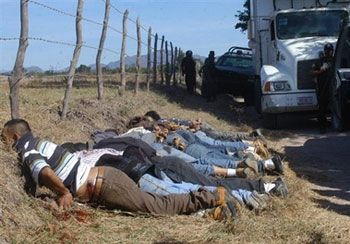 Killing on Jan 5 2009. El Universal photo |
Scattered killings tied to the break-up of Barbie and Hector have already stained Mexico City and its suburbs.
Although the denizens of the old Aztec capital have long put up with armed robbers, fly-by-night kidnappers, ubiquitous scam artists and thieves of every type, size and shape, many have viewed their lives as far removed from the vicious narco wars played out in the lawless hillbilly districts of Guerrero or Michoacan, or the distant, culturally bizarre no-man’s land of the Mexico-US borderlands. All that could be changing...
Last January’s shooting of soccer star Salvador Cabanas inside a Mexico City nightclub partially exposed how narco culture had seeped deeply into multiple layers of society. Cabanas’ alleged attacker, Jorge Balderas Garza, was a ghost-like man with a billfold of names and monikers including “Batman.”
The fugitive Balderas was a VIP regular of the Bar Bar club where Cabanas was shot and, according to the Mexico City district attorney general's office, a major retail drug distributor for the Beltran Leyvas and Barbie, who specialized in the upscale night club scene. Bar Bar was well known as a favorite hangout of television stars.
 Silvia Elena Irabien, is the mother of Balderas' daughter. |
Balderas, or whatever his true name might be, is the father of Silvia Elena Irabien Mike’s daughter. Popularly known as “La Chiva,” the 35-year-old Irabien came from nowhere to gain fame as a star of the Big Brother reality television show. Becoming a sex symbol, La Chiva pranced around naked in videos that reportedly fetched millions.
In 2009, Irabien was listed as a possible Congressional candidate in the state of Yucatan for the since-disappeared Social Democratic Party, a short-lived political group that favored drug legalization. The erstwhile media personality soon said she was too busy with other projects to delve into politics for the moment. However, a comeback cannot be ruled out.
Like a flashy party that only gets better and better before it blows up and burns down the neighborhood, a confluence of narcos, entertainers, policemen and politicians has long electrified neighboring Morelos. The presence of celebrity musicians like Ramon Ayala at an ostentatious party hosted by Arturo Beltran just before his death was but another example of the ascent of the narco to the court of the elite.
In Morelos, the current war between the pretenders to El Barbas’ crown should come as no surprise. The Carrillo-Fuentes brothers of the Juarez Cartel reportedly found safe haven in the small but hospitable state, and it was rumored that another capo identified with the organization, “El Azul,” was romantically involved with the daughter of a state governor.
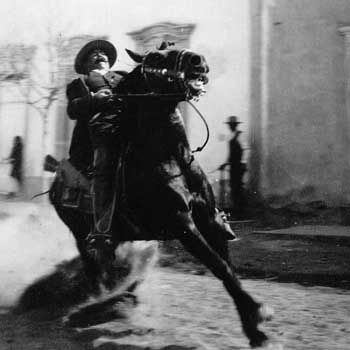
For decades, fertile ground had been sown for the transition from the old order to the new. Under successive administrations of the PRI and PAN parties, different police agencies busied themselves with kidnapping-for-profit, watching over air strips where drugs were loaded/unloaded and protecting kingpins.
By the turn of the new century, a fire sale of Morelos real estate was on, as the old elite, terrorized by hundreds of kidnappings and murders, scurried quickly out of Dodge. A similar process the state of Chihuahua has since transformed Ciudad Juarez, on the Mexico-US border.
Flush with cash, northerners like the Beltran Leyvas and Barbie moved in to displace the archaic bourgeoisie.
And in an odd and ironically taunting way, the ruffians from the Great Chichimeca and beyond, that vast land north of the Valley of Mexico which neither Aztec nor Spanish rulers could really control, also share a certain similarity to Pancho Villa and others who began closing in on the Mexican capital nearly 100 years ago.
In a modern sense, Cuernavaca and its environs function as not only the getaway of Mexico City, but the gateway to the Grand Tenochtitlan.
A full-scale narco war for the prize of Mexico City, wrote journalist Jorge Carrasco Araizaga recently, would represent the “coronation of the escalation of violence touched off by Felipe Calderon’s strategy.”
An open struggle for the nerve center of the nation, Carrasco wrote, could mark the “consummation of the challenge to the State.”
================================================
Source:
Frontera NorteSur (FNS): on-line, U.S.-Mexico border news Center for Latin American and Border Studies New Mexico State University Las Cruces, New Mexico
Additional Sources:
- El Diario de Juarez, May 7, 2010.
- Proceso/Apro, March 13, 19, 20, 24, 2010; April 14 and 24, 2010; May 4 and 5, 2010, Articles by Jorge Carrasco Araizaga, Gloria Leticia Diaz, Ezequial Flores Contreras, Javier Sicilia, and editorial staff.
- El Sur, March 10, 23, 26, 2010; April 15 and 16, 2010; May 5 and 9, 2010. Articles by Zacarias Cervantes, Jesus Saavedra, Xavier Rosado, and the Reforma news service.
- La Jornada, March 15 and May 9, 2010. Articles by Misael Habana de los Santos and editorial staff.
- Milenio.com, May 1, 2010.
- El Universal, December 17, 2009; February 11 and 27, 2010; March 16, 19, 24, 30, 2010; April 2, 22 and 24, 2010; May 5, 2010. Articles by Silvia Otero, Claudia Bolanos, Francisco Gomez, Justino Miranda, Salvador Garcia Soto, Carlos Loret de Mola, Roberto Morelos Cruz, Notimex, AFP, and editorial staff.
Articles for May 11, 2010 | Articles for May 12, 2010 | Articles for May 13, 2010

googlec507860f6901db00.html
Salem-News.com:



Terms of Service | Privacy Policy
All comments and messages are approved by people and self promotional links or unacceptable comments are denied.
some info August 11, 2010 3:00 am (Pacific time)
it was actually the other way around: Morelos' ex-governor Estrada Cajigal was dating the daughter of "el azul", veteran leader of the sinaloa cartel, known for his diplomatic skills
lol July 16, 2010 7:21 pm (Pacific time)
nice writing
Correction May 17, 2010 8:33 am (Pacific time)
"Mayate" is slang for the "partner" of the homosexual. A "mayate" might not necesarily be a homosexual him/herself.
CANADIAN May 15, 2010 7:10 am (Pacific time)
Thanks for the information, I have been following this dispute for several months and see no end in sight. It seems La Barbie may be one of the most elusive people in Mexico at this time. My bet is that he has large scale protection from the Sinola cartel, but this may not be true as some say Barbie is now running solo.
[Return to Top]©2025 Salem-News.com. All opinions expressed in this article are those of the author and do not necessarily reflect those of Salem-News.com.